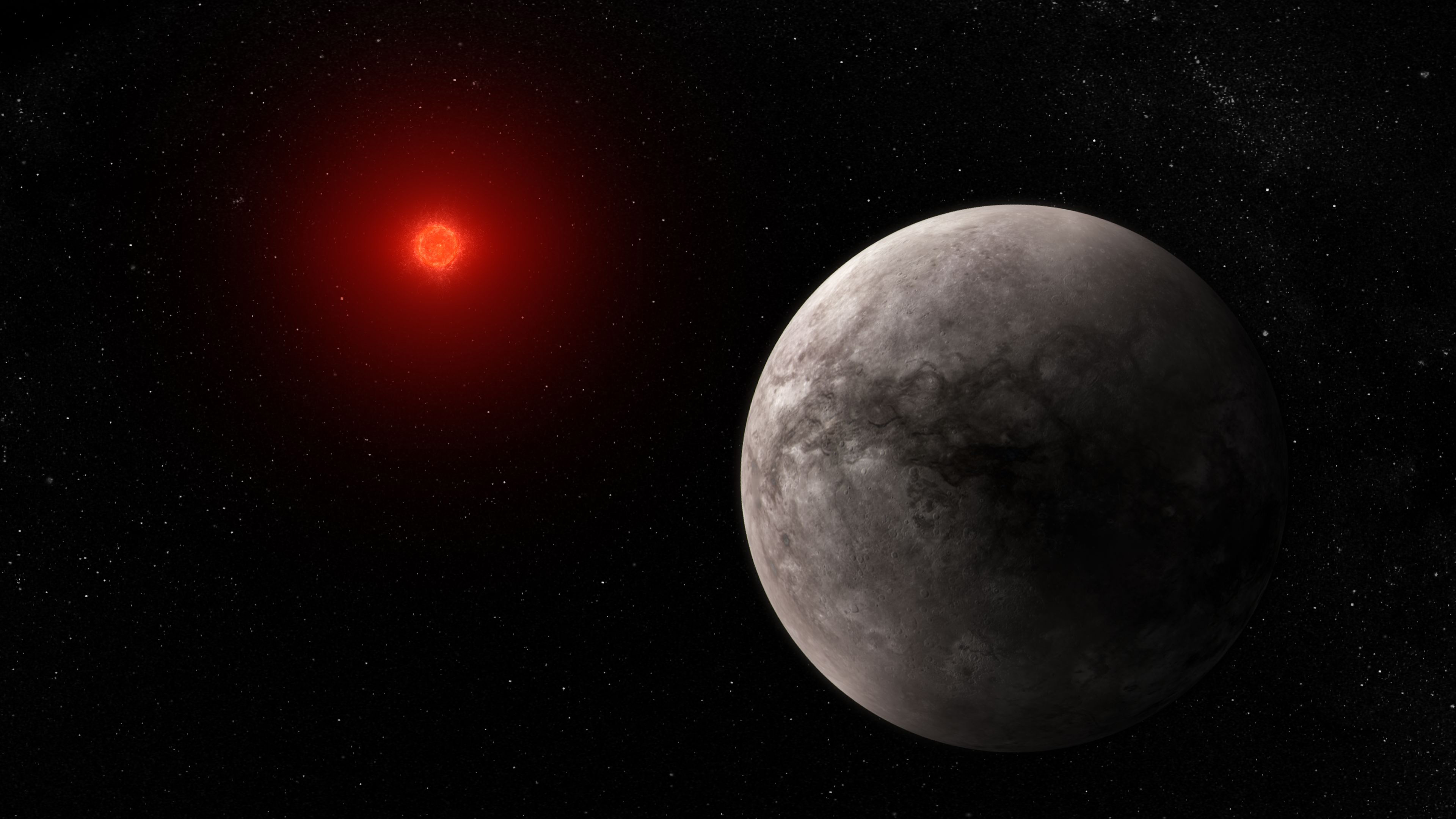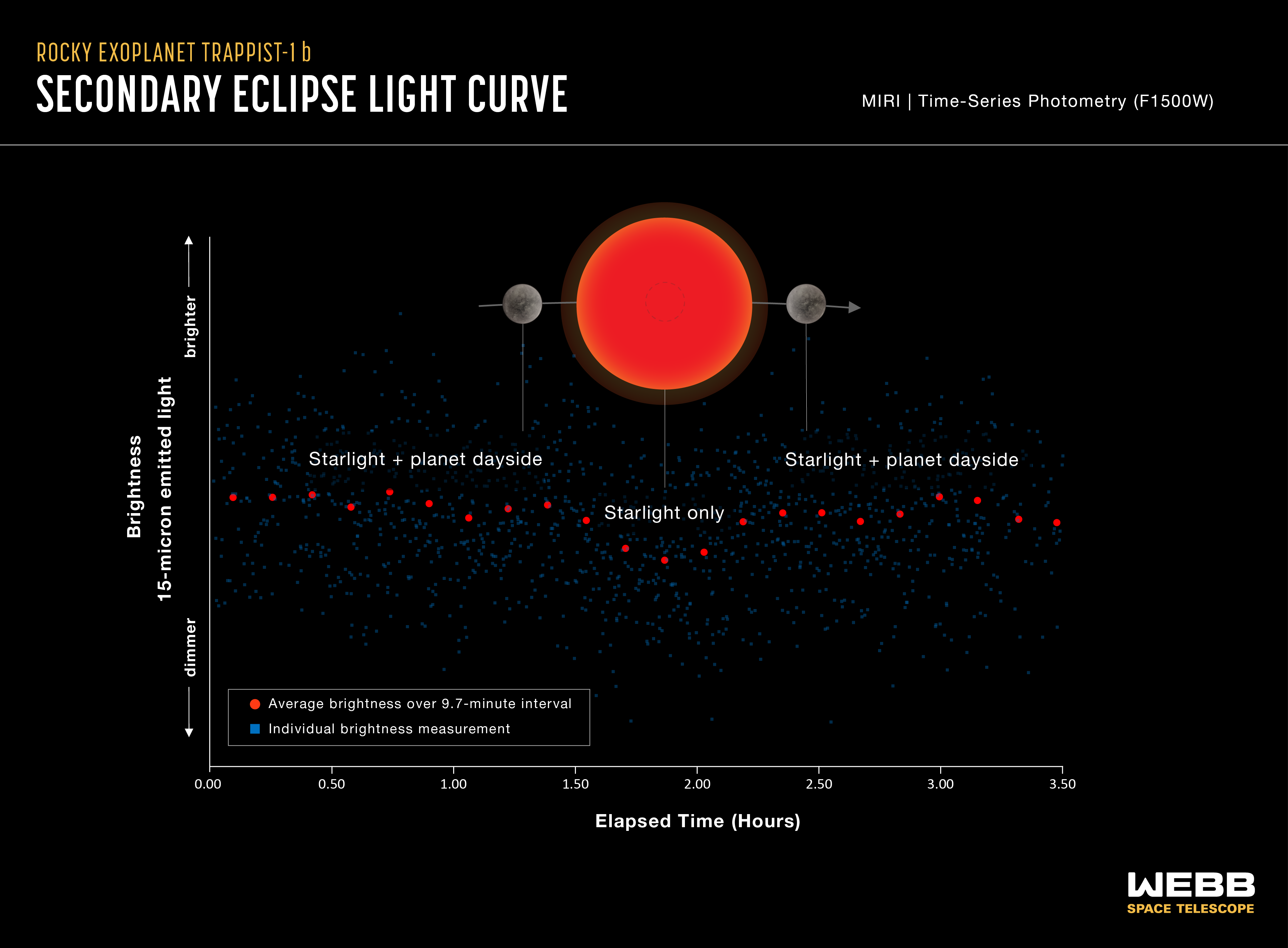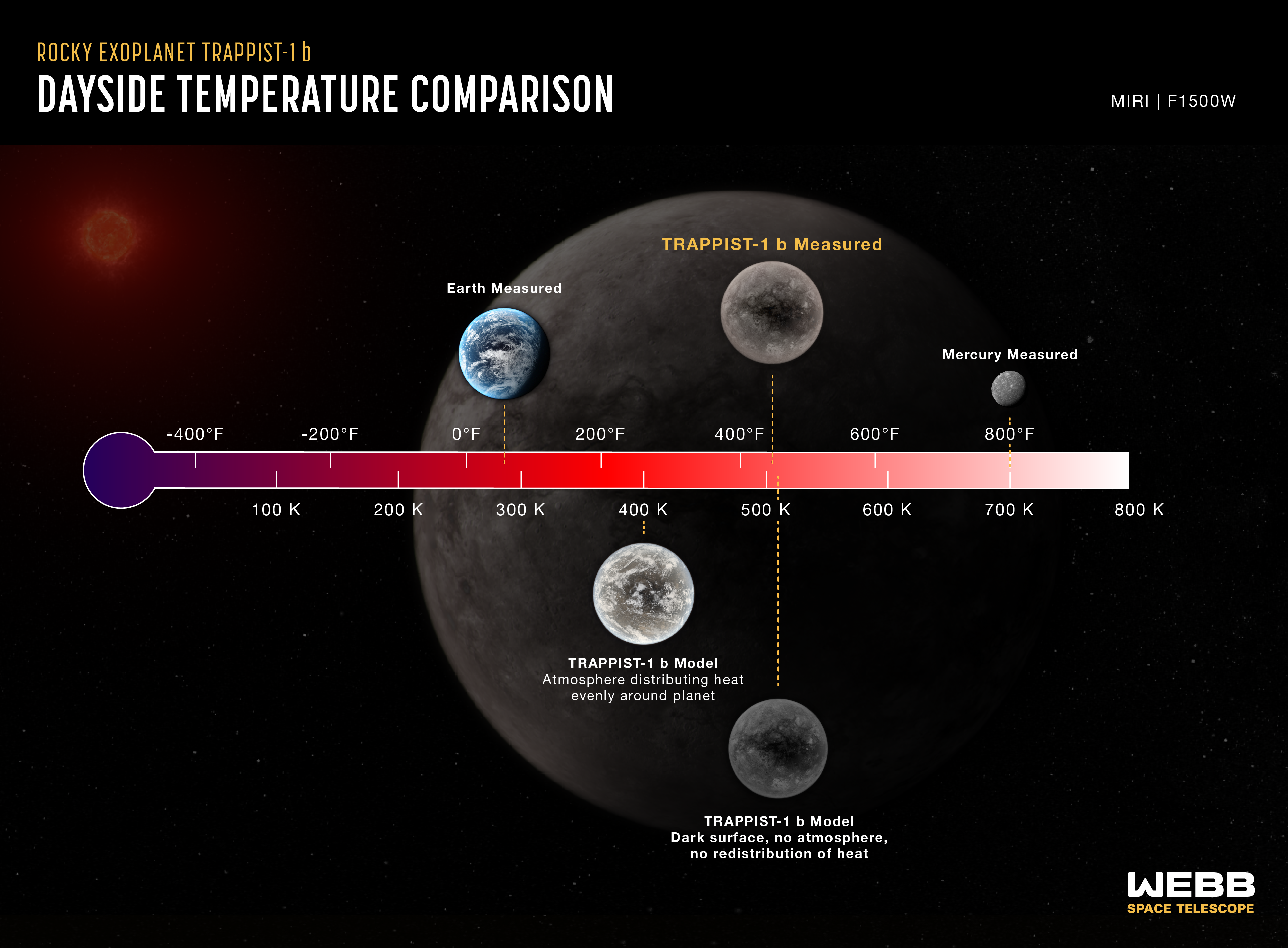1 min read
Rocky Exoplanet TRAPPIST-1 b (Illustration)

This illustration shows what the hot rocky exoplanet TRAPPIST-1 b could look like based on this work. TRAPPIST-1 b, the innermost of seven known planets in the TRAPPIST-1 system, orbits its star at a distance of 0.011 AU, completing one circuit in just 1.51 Earth-days. TRAPPIST-1 b is slightly larger than Earth, but has around the same density, which indicates that it must have a rocky composition. Webb’s measurement of mid-infrared light given off by TRAPPIST-1 b suggests that the planet does not have any substantial atmosphere. The star, TRAPPIST-1, is an ultracool red dwarf (M dwarf) with a temperature of only 2,566 kelvins and a mass just 0.09 times the mass of the Sun.
This illustration is based on new data gathered by Webb’s Mid-Infrared Instrument (MIRI) as well as previous observations from other ground- and space-based telescopes. Webb has not captured any images of the planet.
About the Object
- R.A. PositionR.A. PositionRight ascension – analogous to longitude – is one component of an object's position.23h 06m 30s
- Dec. PositionDec. PositionDeclination – analogous to latitude – is one component of an object's position.-05d 02m 30s
- ConstellationConstellationOne of 88 recognized regions of the celestial sphere in which the object appears.Aquarius
- DistanceDistanceThe physical distance from Earth to the astronomical object. Distances within our solar system are usually measured in Astronomical Units (AU). Distances between stars are usually measured in light-years. Interstellar distances can also be measured in parsecs.40 light-years
- DimensionsDimensionsThe physical size of the object or the apparent angle it subtends on the sky.Star: radius = 0.11 × Sun; mass = 0.09 × Sun Planet: radius = 1.1 × Earth; mass = 1.4 × Earth
About the Data
- Data DescriptionData DescriptionProposal: A description of the observations, their scientific justification, and the links to the data available in the science archive.
Science Team: The astronomers who planned the observations and analyzed the data. "PI" refers to the Principal Investigator.
- Object NameObject NameA name or catalog number that astronomers use to identify an astronomical object.TRAPPIST-1 and TRAPPIST-1 b
- Object DescriptionObject DescriptionThe type of astronomical object.M-dwarf star and rocky exoplanet
- Release DateMarch 27, 2023
- Science ReleaseNASA’s Webb Measures the Temperature of a Rocky Exoplanet
- CreditIllustration: NASA, ESA, CSA, Joseph Olmsted (STScI); Science: Thomas Greene (NASA Ames), Taylor Bell (BAERI), Elsa Ducrot (CEA), Pierre-Olivier Lagage (CEA)
Related Images & Videos

Rocky Exoplanet TRAPPIST-1 b (Secondary Eclipse Light Curve)
This light curve shows the change in brightness of the TRAPPIST-1 system as the innermost planet, TRAPPIST-1 b, moves behind the star. This phenomenon is known as a secondary eclipse . Astronomers used Webb’s Mid-Infrared Instrument (MIRI) to measure the brightness of...

Rocky Exoplanet TRAPPIST-1 b (Dayside Temperature Comparison)
Comparison of the dayside temperature of TRAPPIST-1 b as measured using Webb’s Mid-Infrared Instrument (MIRI) to computer models showing what the temperature would be under various conditions. The models take into account the known properties of the system, including the...
Share
Details
Laura Betz
NASA’s Goddard Space Flight Center
Greenbelt, Maryland
laura.e.betz@nasa.gov
NASA, ESA, CSA, Joseph Olmsted (STScI)
Thomas Greene (NASA Ames), Taylor Bell (BAERI), Elsa Ducrot (CEA), Pierre-Olivier Lagage (CEA)































